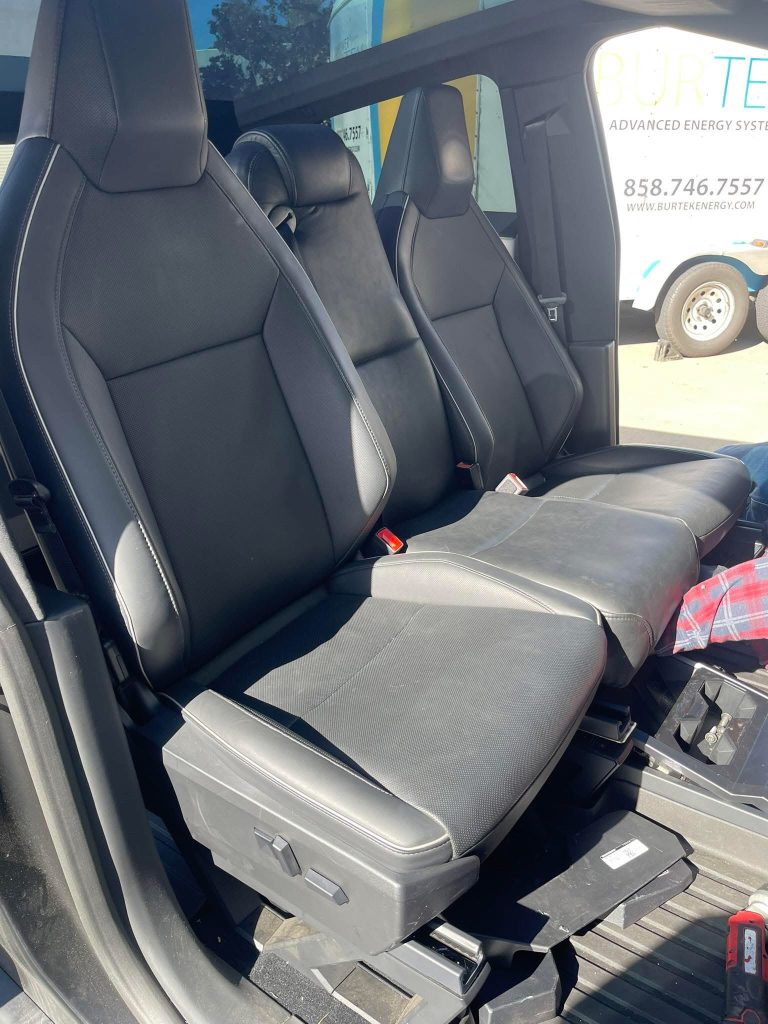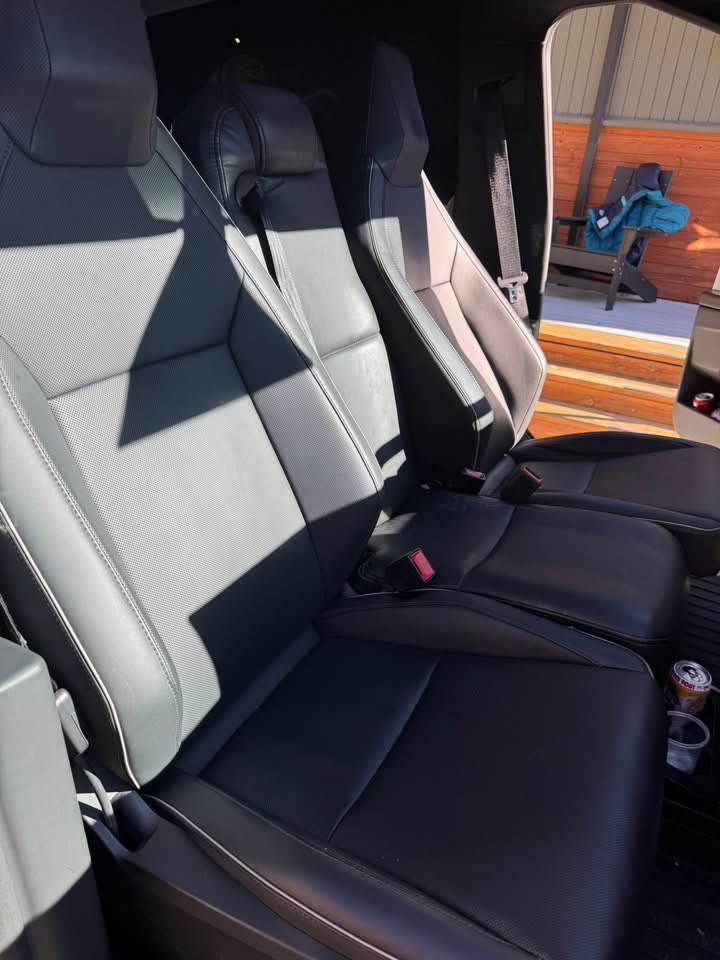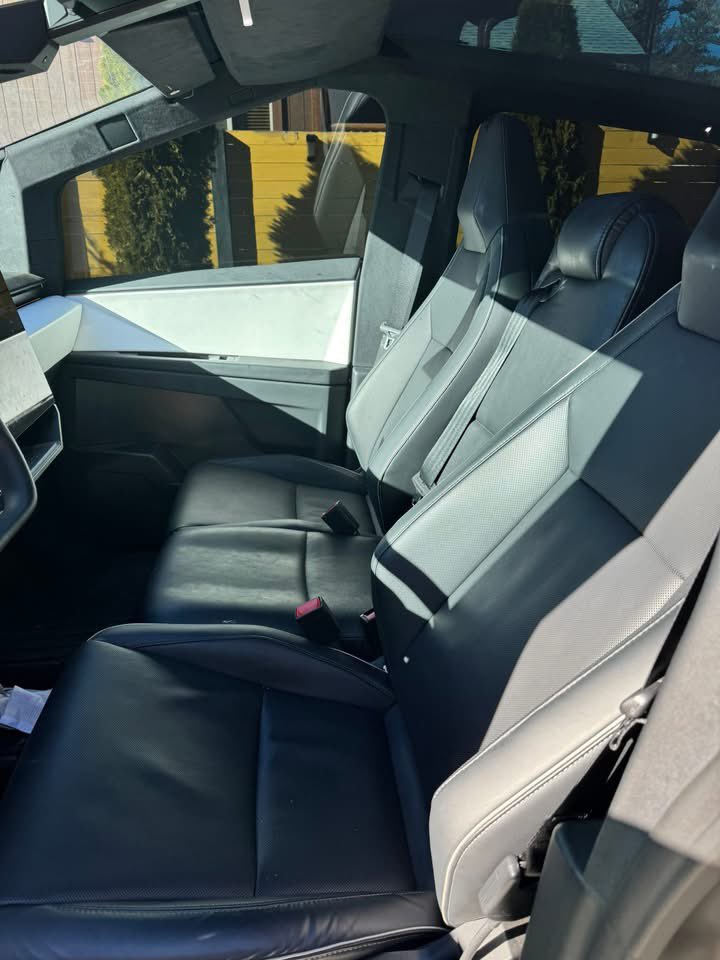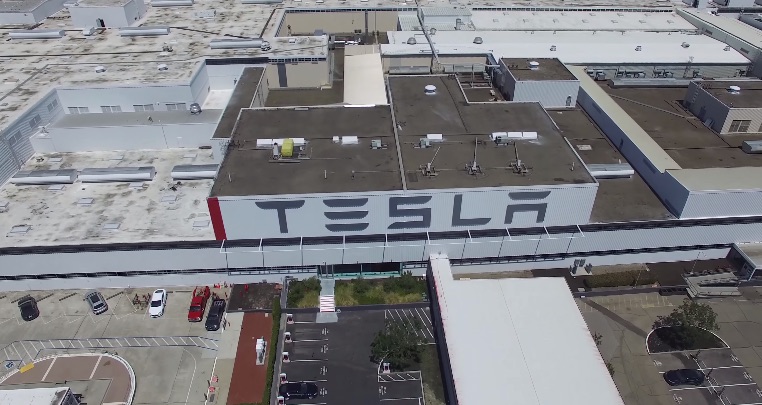

News
Tesla emphasizes factory safety, preempts possible smear campaign by auto union
Tesla released a blog post Sunday evening that reemphasizes the company’s goal to become the safest auto factory in the world. The post comes after the United Auto Workers Union (UAW) attempted to rally support earlier this year from Fremont factory workers in favor of unionizing.
Tesla states that it has received several media inquiries over allegations about safety at its Fremont, California factory. The well-timed nature of the inquiries, and similarity in topic, led Tesla to believe that the UAW was spreading anti-Tesla propaganda to the media in an attempt to provoke a response from the public, and from Tesla employees. In typical fashion, Tesla acted quickly and took to the offensive to defend the company’s approach to manufacturing, and maintaining the health and safety of its employees. The company has gone as far as forming dedicated Ergonomics Teams that have exclusive focus on “improving health and safety and reducing ergonomic risk for current and future production”.
“We are building entirely new vehicles from the ground up, using entirely new technology, production, and manufacturing methods, and ramping them at high volume. Getting this right is extremely difficult, and we deeply appreciate the hard work that all our employees do to help us achieve what most regard as impossible.” says Tesla through its blog post.
Tesla notes that in just 15 years, the company has become the largest manufacturing employer in California with over 10,000 production jobs in the Fremont factory and surrounding Bay Area.
Tesla has a proven track record of putting safety first as made evident by the award-winning safety ratings for its Model S and Model X. Vehicles have taken the brunt of the impact for their occupants, have swerved to avoid accidents and have even accelerated to avoid accidents. The innovative safety features Tesla has built into its vehicles is unsurpassed in the automotive world.
Though Tesla’s safety record to date is already better than industry-average, according to its press release, the company indicates that it continues to learn and apply new production processes aimed at improving employee well-being. Among the improvements are:
- Added 3rd shift to the manufacturing schedule to cut overtime because the employees asked for it and it was the right thing to do.
- Hired dedicated Ergonomist and established an Ergonomics team to ensure that current and future Tesla manufacturing lines are ergonomically friendly for employees.
- Model 3 has been designed with manufacturing employee ergonomics in mind. The Tesla Ergonomics Team works closely with design and engineering teams to catch ergonomics issues before they happen and proactively drive these improvements back into the design of the equipment and the car. Yes, you heard that right. Tesla will redesign the car if it is resulting in ergonomically challenging situations for its manufacturing employees.
- Established safety teams in every department which meets regularly to ensure safety is a top focus in its manufacturing operating departments.
These changes are not just skin deep and the company is seeing the results of the changes already. Tesla says it has collectively reduced 52% in lost time incidents and a 30% reduction in recordable incidents in the first quarter of 2017 versus the same period last year. These more granular metrics support an improvement in the industry standard Total Recordable Incident Rate (TRIR) which at the end of Q1 2017 was 4.6, a full 32% better than the industry standard of 6.7.
Anyone who has worked in an industry where safety is important can tell you that a culture of safety awareness is built day by day, month by month over many years. Tesla has a demonstrated history of superior results. The steps it has outlined to drive further improvements at the factory are evidence of a continued focus on safety and its employees.
The full post from the Tesla Blog reads as follows:
Creating the Safest Car Factory in the World
Earlier this year, the United Automobile Workers (UAW) announced it was attempting to organize workers in Tesla’s Fremont factory. The latest phase of their campaign involves a concerted and professional media push intended to raise questions about safety at Tesla.
We have received calls from multiple journalists at different publications, all around the same time, with similar allegations from seemingly similar sources about safety in the Tesla factory. Safety is an issue the UAW frequently raises in campaigns it runs against companies, and a topic its organizers have been promoting on social media about Tesla.
Some of the publications who have contacted us have rejected covering this “story” because they understand it is a misleading narrative based on anecdotes, not facts. However, there will likely be a few publications that choose to publish stories regardless, so we want to make sure the public also has the facts. Watch for these articles to downplay or ignore our actual 2017 safety data and to instead focus on a small number of complaints and anecdotes that are not representative of what is actually occurring in our factory of over 10,000 workers.
First, some context is important. The difficulty of starting a successful U.S. car company cannot be overstated, as evidenced by the fact that Ford is the only other U.S. car company to have never gone bankrupt. We are attempting to break this trend in order to fulfill our mission of accelerating the world’s transition to sustainable energy.
We are building entirely new vehicles from the ground up, using entirely new technology, production, and manufacturing methods, and ramping them at high volume. Getting this right is extremely difficult, and we deeply appreciate the hard work that all our employees do to help us achieve what most regard as impossible. While we still have a long way to go, in less than 15 years, we have become California’s largest manufacturing employer, creating more than 10,000 high-quality production jobs in the Bay Area, many of which had previously disappeared with the closure of NUMMI under the stewardship of the UAW.
As we work to achieve our mission, nothing is more important to us than protecting the health and safety of our employees. As we look at our safety record in prior years, we realize that we have not been perfect. No car factory is perfect, but particularly given that Model S and X were the first cars we built at more than tiny volumes, we fully acknowledge that they were not designed for ease of manufacturing – far from it. As would be expected, we have since learned many lessons, including how to improve the production process for the well-being of our colleagues.
Here are just some of the improvements that we have made:
- Historically, depending on production needs, some Tesla employees have worked significant amounts of overtime because it was necessary for the company to survive. However, working overtime can be challenging for employees and their families. Last year, we added a third shift to reduce the overtime burden on each team member and to improve safety. We did this because our employees asked for it, and because it was the right thing to do.
- As a result of this change, the average amount of hours worked by production team members has dropped to about 42 hours per week, and the level of overtime decreased by more than 60%. We hired our first dedicated Ergonomist in 2013, and in 2015 established an Ergonomics Team exclusively focused on improving health and safety and reducing ergonomic risk for current and future production.
- In addition to improving the process of building Model S and X, Model 3 has been designed specifically with ergonomics in mind. Our ergonomics team has worked hand-in-hand with our engineers on the design process. As just one example, we created simulations that showed us where reaching or bending by employees was most likely to occur, which in turn allowed us to redesign the equipment and the car to eliminate these issues as much as possible.
- Each department now has a Safety Team that meets regularly to increase safety awareness and recommend improvements, many of which have already been implemented.
- We are continuing to establish health and safety management procedures to scale with our operational growth.
The third shift, ergonomic improvements and increased safety awareness have collectively led to a 52% reduction in lost time incidents and a 30% reduction in recordable incidents from the first quarter of 2016 to the first quarter of 2017. In addition, through the end of Q1 2017, the factory’s total recordable incident rate (TRIR), the leading metric for workplace safety, is 4.6, which is 32% better than the industry average of 6.7. This data shows that there has been a dramatic improvement in employee safety, we are now significantly better than industry-average, and we continue to improve each day. A few anecdotes in a factory of over 10,000 people can always be given, but these are the facts.
Tesla’s safety record is much better than industry average, but it is not enough. Our goal is to have as close to zero injuries as humanly possible and to become the safest factory in the auto industry. We will get there by continuing to ask our employees to raise safety concerns and to keep proposing ideas that make things even better.
The alternative is to stop improving and to instead do what the rest of the industry, including the UAW, has always done. But being industry average would make our safety 32% worse. We care too much about our team to go backwards.

Cybertruck
Tesla Cybertruck undergoes interior mod that many owners wanted
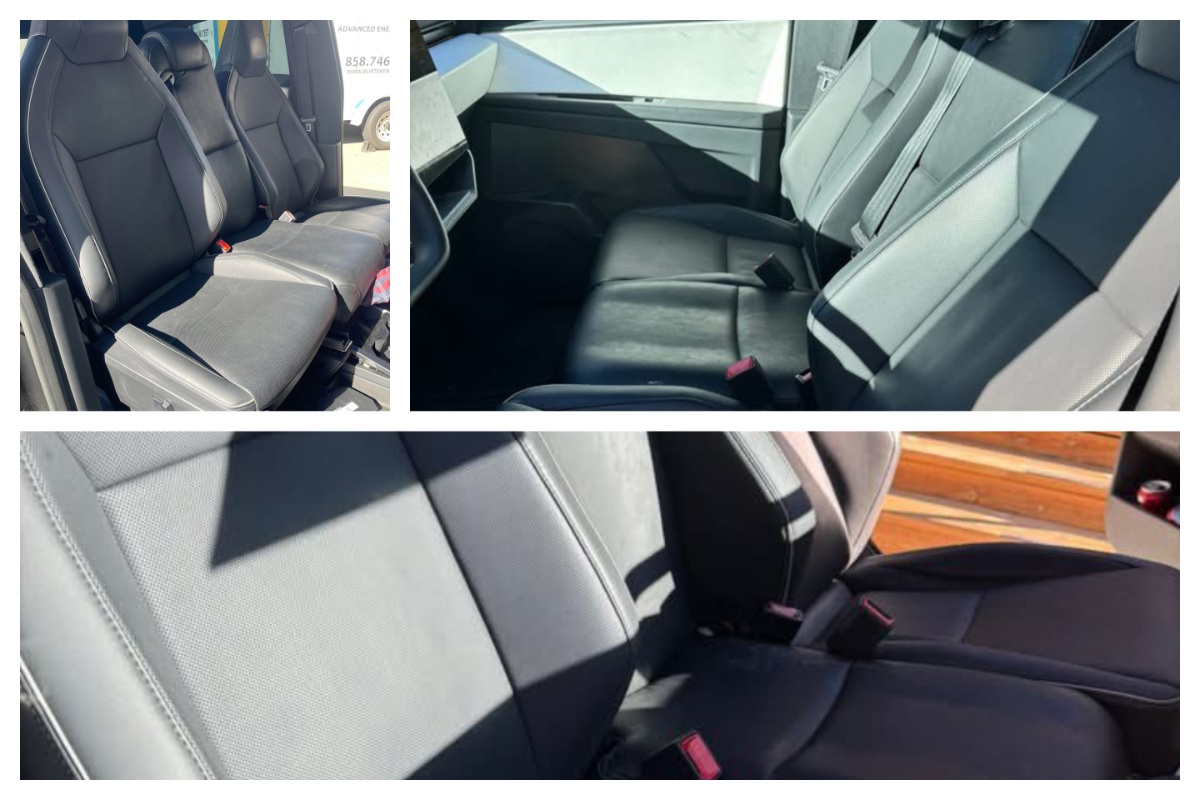
Tesla Cybertruck is significantly different from traditional pickups on the market in a lot of ways. However, one feature that was recently modified with its interior was a highly requested characteristic that is present in other trucks, but was void from Cybertruck.
Tesla went with a five-seat configuration with Cybertruck: two in the front and three in the back. The spacious interior is matched with plenty of storage, especially up front, as a pass-through, center console, and other storage options, but some Tesla fans wanted something different: bench seating.
Bench seating is popular in many full-size pickups and allows three passengers to sit up front. The middle seat is usually accompanied by a fold-down storage unit with cupholders.
Tesla decided to opt for no bench seating up front, despite the fact that it equipped bench seating in the unveiling in 2019. Interior photos from the unveiling event from nearly six-and-a-half years ago show Tesla had originally planned to have a six-seat configuration.
This was adjusted after the company refined the design:
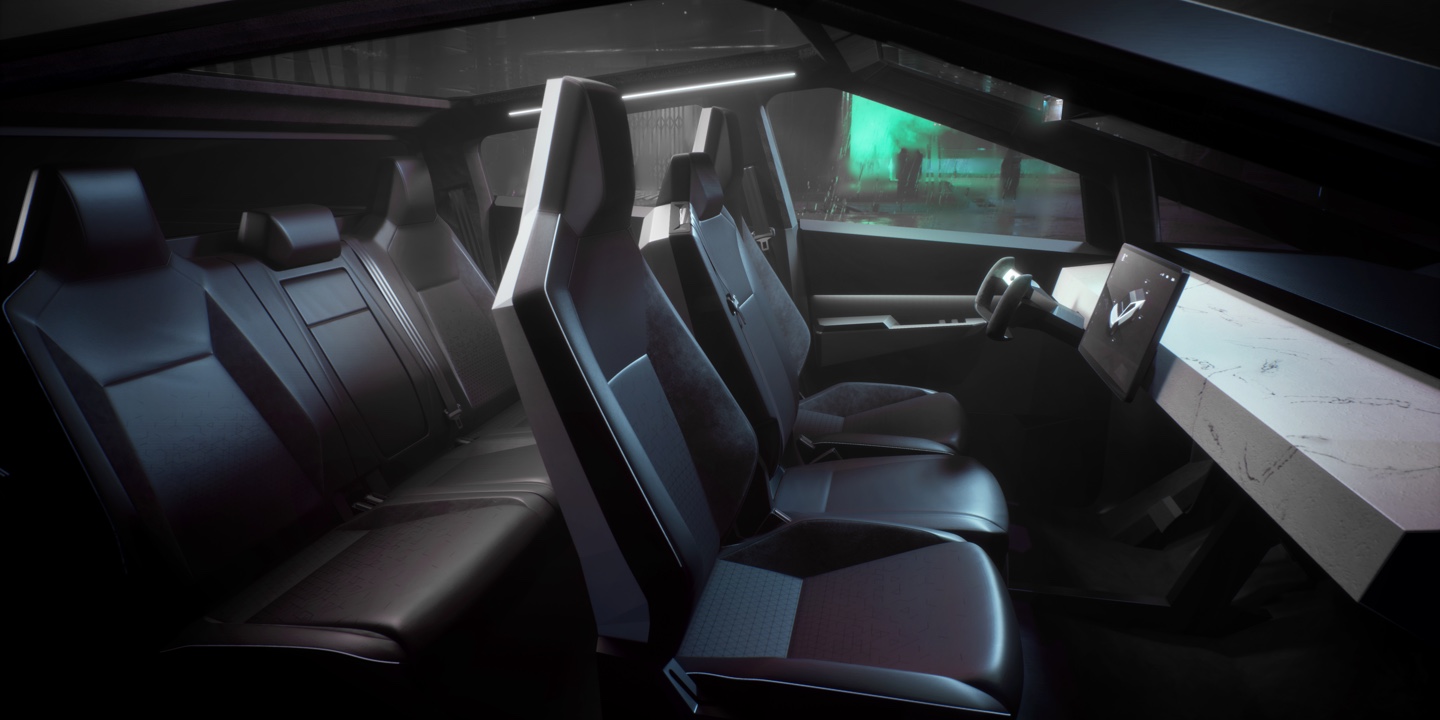
(Tesla Cybertruck interior configuration in 2019)
Despite Tesla abandoning this design, it does not mean owners were willing to accept it. One owner decided to modify their Tesla Cybertruck interior to equip that third seat between the driver’s and passenger’s thrones.
The fit is snug, and while it looks great, it is important to remember that this does not abide byregulations, as it would require an airbag to be technically legal. Please do not do this at home with your own Cybertruck:
- Credit: @blueskykites
- Credit: @blueskykites
- Credit: @blueskykites
The Cybertruck is a popular vehicle in terms of publicity, but its sales have been underwhelming since first delivered to customers back in 2023. It’s hard to believe it’s been out for two-and-a-half years, but despite this, Tesla has not been able to come through on its extensive order sheet.
This is mostly due to price, as Cybertruck was simply not as affordable as Tesla originally planned. Its three configurations were initially priced at $39,990, $49,990, and $69,990. At release, Cybertruck was priced above $100,000.
This priced out many of those who had placed orders, which is the main reason Cybertruck has not lived up to its expectations in terms of sales. The adjustments to the specific features, like the removal of the bench seat, likely did not impact sales as much as pricing did.
This modification shows some creativity by Tesla owners, but also shows that the Cybertruck could always be the subject of a potential refresh to include some of these features. Tesla routinely adjusts its vehicle designs every few years, so maybe the Cybertruck could get something like this if it chooses to refresh its all-electric pickup.
Elon Musk
Tesla CEO Elon Musk drops massive bomb about Cybercab
“And there is so much to this car that is not obvious on the surface,” Musk said.
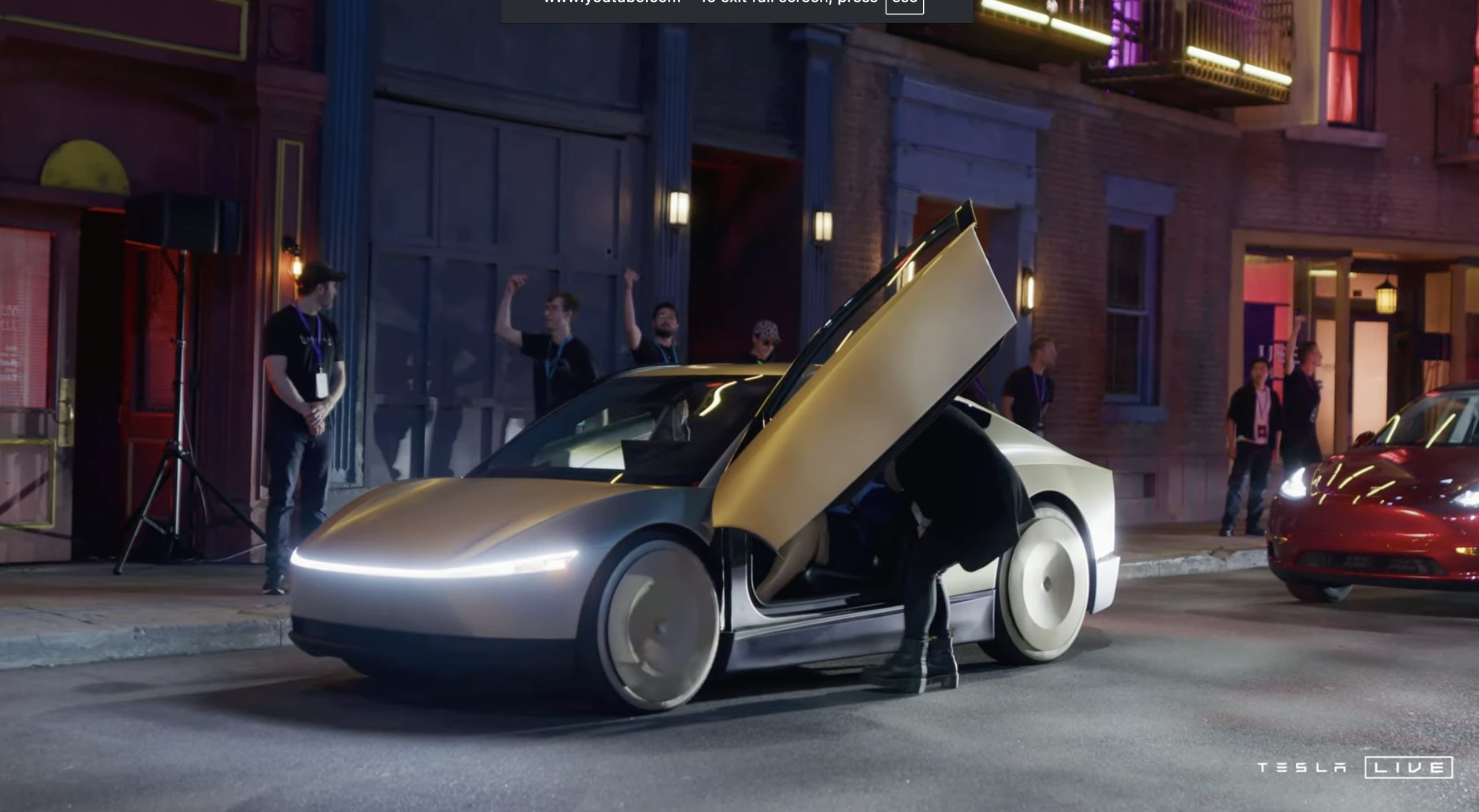
Tesla CEO Elon Musk dropped a massive bomb about the Cybercab, which is the company’s fully autonomous ride-hailing vehicle that will enter production later this year.
The Cybercab was unveiled back in October 2024 at the company’s “We, Robot” event in Los Angeles, and is among the major catalysts for the company’s growth in the coming years. It is expected to push Tesla into a major growth phase, especially as the automaker is transitioning into more of an AI and Robotics company than anything else.
The Cybercab will enable completely autonomous ride-hailing for Tesla, and although its other vehicles will also be capable of this technology, the Cybercab is slightly different. It will have no steering wheel or pedals, and will allow two occupants to travel from Point A to Point B with zero responsibilities within the car.
Tesla shares epic 2025 recap video, confirms start of Cybercab production
Details on the Cybercab are pretty face value at this point: we know Tesla is enabling 1-2 passengers to ride in it at a time, and this strategy was based on statistics that show most ride-hailing trips have no more than two occupants. It will also have in-vehicle entertainment options accessible from the center touchscreen.
It will also have wireless charging capabilities, which were displayed at “We, Robot,” and there could be more features that will be highly beneficial to riders, offering a full-fledged autonomous experience.
Musk dropped a big hint that there is much more to the Cybercab than what we know, as a post on X said that “there is so much to this car that is not obvious on the surface.”
And there is so much to this car that is not obvious on the surface
— Elon Musk (@elonmusk) January 2, 2026
As the Cybercab is expected to enter production later this year, Tesla is surely going to include a handful of things they have not yet revealed to the public.
Musk seems to be indicating that some of the features will make it even more groundbreaking, and the idea is to enable a truly autonomous experience from start to finish for riders. Everything from climate control to emergency systems, and more, should be included with the car.
It seems more likely than not that Tesla will make the Cybercab its smartest vehicle so far, as if its current lineup is not already extremely intelligent, user-friendly, and intuitive.
Investor's Corner
Tesla Q4 delivery numbers are better than they initially look: analyst
The Deepwater Asset Management Managing Partner shared his thoughts in a post on his website.
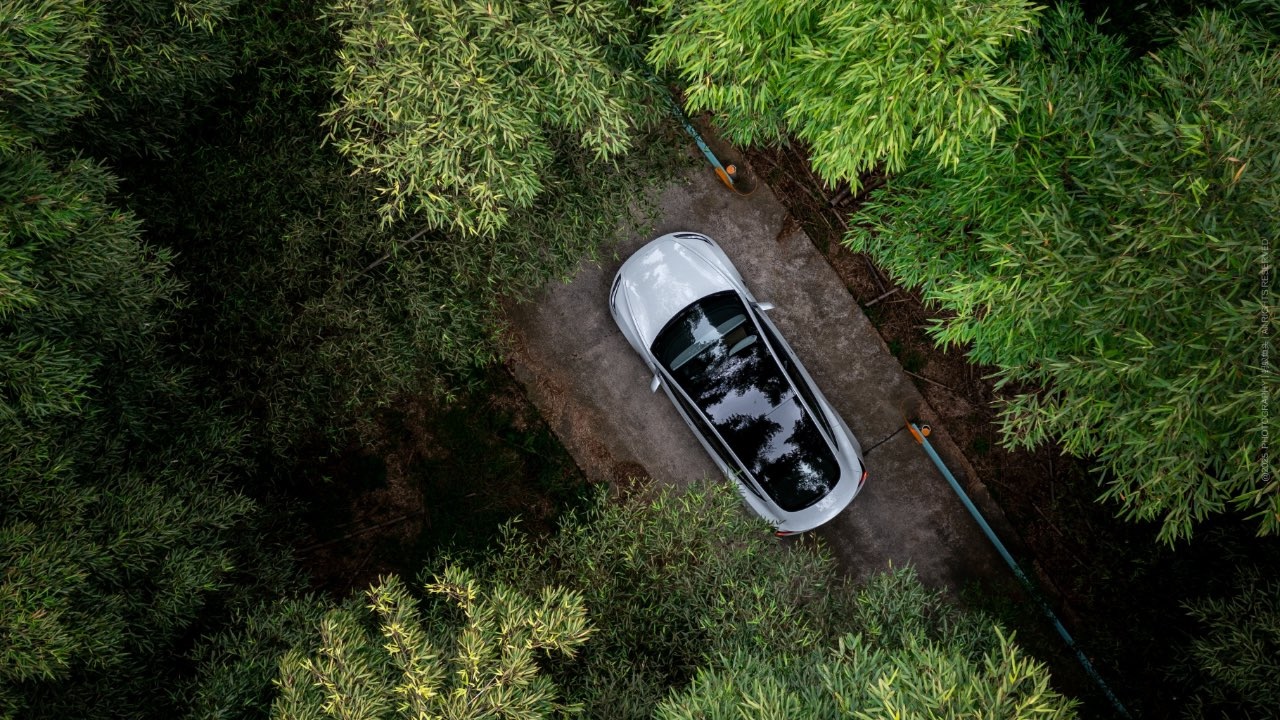
Longtime Tesla analyst and Deepwater Asset Management Managing Partner Gene Munster has shared his insights on Tesla’s Q4 2025 deliveries. As per the analyst, Tesla’s numbers are actually better than they first appear.
Munster shared his thoughts in a post on his website.
Normalized December Deliveries
Munster noted that Tesla delivered 418k vehicles in the fourth quarter of 2025, slightly below Street expectations of 420k but above the whisper number of 415k. Tesla’s reported 16% year-over-year decline, compared to +7% in September, is largely distorted by the timing of the tax credit expiration, which pulled forward demand.
“Taking a step back, we believe September deliveries pulled forward approximately 55k units that would have otherwise occurred in December or March. For simplicity, we assume the entire pull-forward impacted the December quarter. Under this assumption, September growth would have been down ~5% absent the 55k pull-forward, a Deepwater estimate tied to the credit’s expiration.
“For December deliveries to have declined ~5% year over year would imply total deliveries of roughly 470k. Subtracting the 55k units pulled into September results in an implied December delivery figure of approximately 415k. The reported 418k suggests that, when normalizing for the tax credit timing, quarter-over-quarter growth has been consistently down ~5%. Importantly, this ~5% decline represents an improvement from the ~13% declines seen in both the March and June 2025 quarters.“
Tesla’s United States market share
Munster also estimated that Q4 as a whole might very well show a notable improvement in Tesla’s market share in the United States.
“Over the past couple of years, based on data from Cox Automotive, Tesla has been losing U.S. EV market share, declining to just under 50%. Based on data for October and November, Cox estimates that total U.S. EV sales were down approximately 35%, compared to Tesla’s just reported down 16% for the full quarter. For the first two months of the quarter, Cox reported Tesla market share of roughly a 65% share, up from under 50% in the September quarter.
“While this data excludes December, the quarter as a whole is likely to show a material improvement in Tesla’s U.S. EV market share.“
